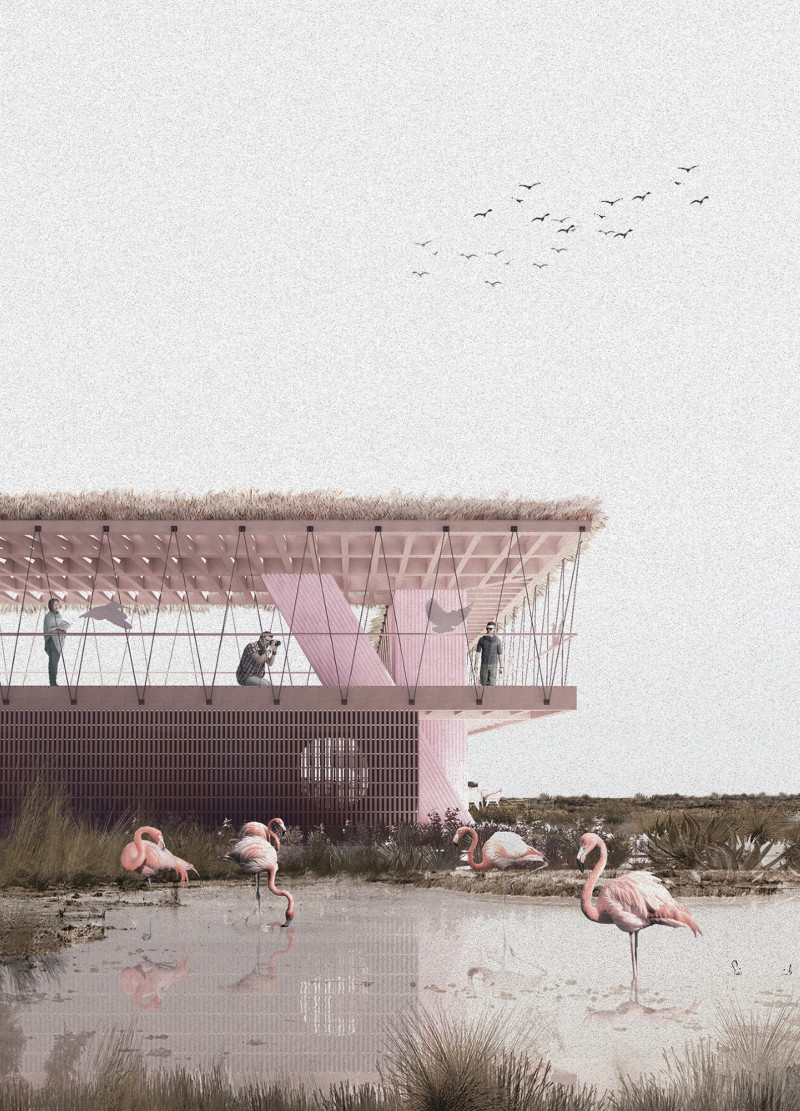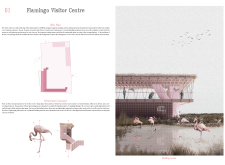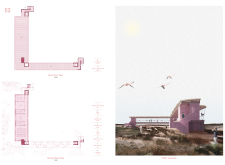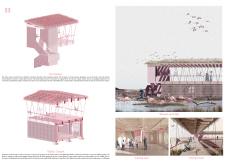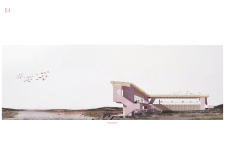5 key facts about this project
The Flamingo Visitor Centre is located in a wetland area that serves both educational and recreational purposes. The design reflects a careful consideration of the environment, promoting a connection between visitors and the natural setting. By limiting the building's footprint to a narrow edge of the site, the project minimizes its impact on the delicate ecosystem while offering wide-ranging views of the wetlands.
Structural Configuration
The centre has an L-shaped plan supported by three main structural points. These points include vertical elements that act as elevators and stairs shaped like scissors. This layout mimics the stance of a standing flamingo, allowing the architecture to resonate with the local wildlife. The design facilitates vertical movement and enhances the overall coherence of the space.
Terrace and Access
One of the key features of the visitor centre is its long terrace that provides extensive views across the wetlands. This outdoor area is crucial for the visitor experience, encouraging observation of the surroundings. Access is easy, thanks to solid staircases and elevators located at each end of the terrace. This ensures that all guests can navigate the space comfortably, fostering a connection with the environment.
Materiality and Interior Design
The building employs pink-pigmented concrete with a raked texture, which gives it a unique visual character. Light timber trusses support the terraces, contributing to a feeling of lightness in the design. The interior benefits from large circular windows that frame the views of the wildlife reserve. Vertical timber battens make up the façade, creating a pattern that harmonizes with the concrete structure.
Lighting and Finish Details
The lighting design features LED tubes with pink folded aluminum 'wings' that direct light downward, creating a warm atmosphere inside the centre. This detail links the design to the flamingo motif, while also providing an inviting setting for visitors. The combination of natural light, structural elements, and finishing touches results in a well-rounded design that highlights the visitor centre's role within the wetland environment.


